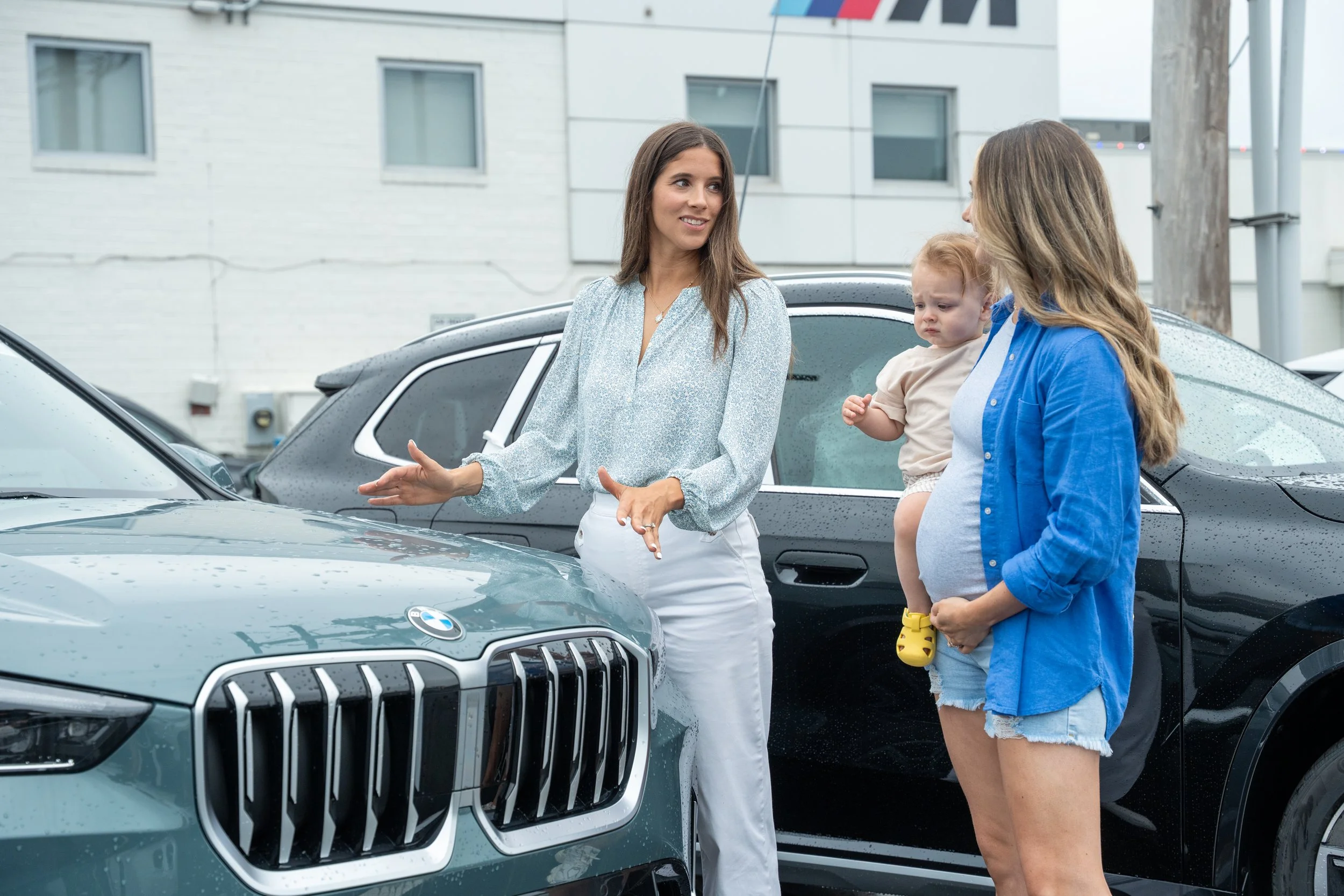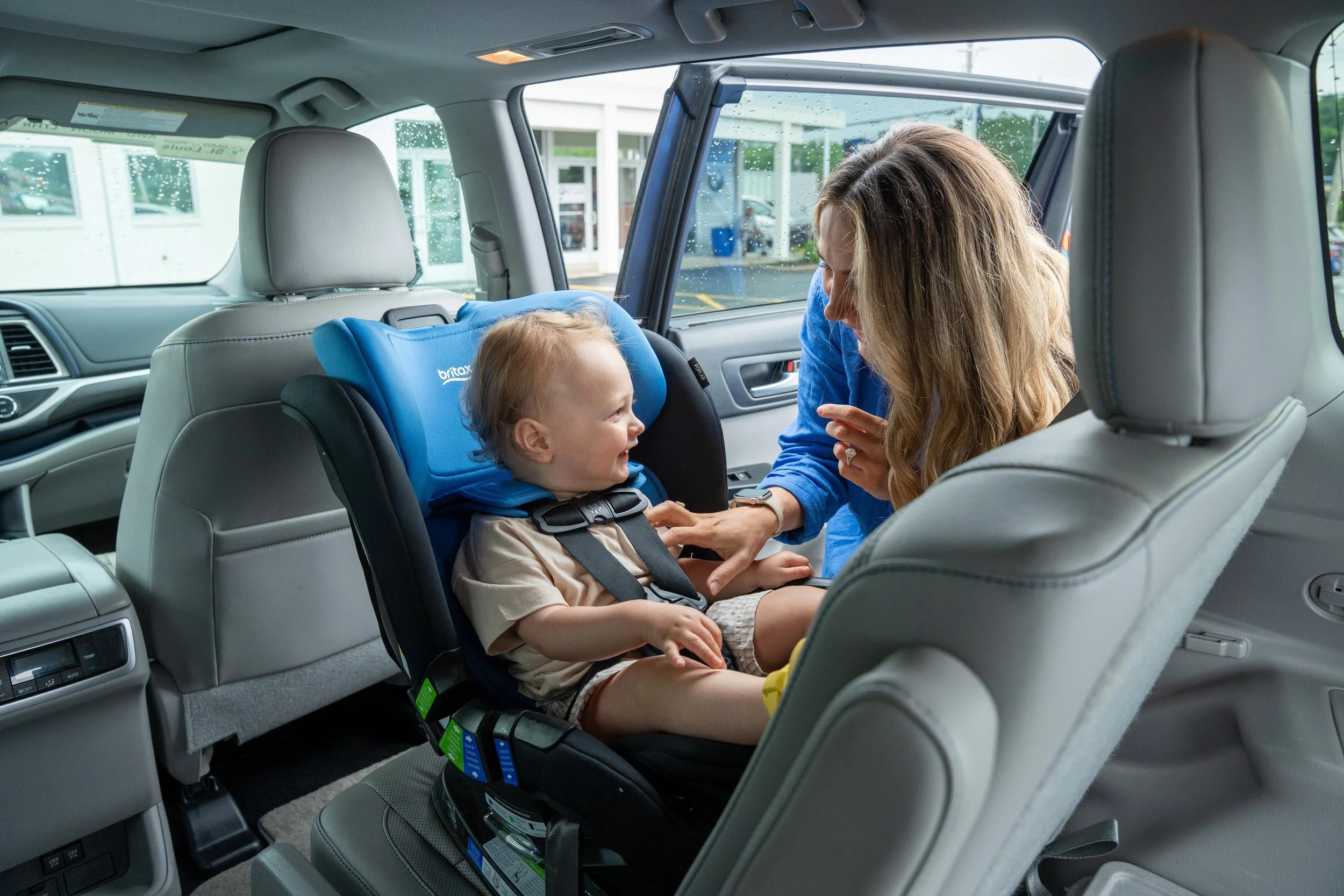Ask a CPST: Should I Bring My Car Seats for a Test Drive?
You finally have your dream car lined up! All that’s left to do is sign on the dotted line, but have you made sure your car seats fit?
To avoid this major letdown, and last minute scrambling for new car seats, the answer is simple: bring your car seats to the dealership and try to install them. Not all car seats are compatible in every vehicle or in every seating position.
This doesn’t mean you have to pass on your ideal family car because your current car seat isn’t compatible. Instead, ensure it fits safely for your drive home from the dealership or knowing ahead of time if you need to purchase new car seats will make car buying day way smoother.
Hi, I’m Sam! Like Kelly the Car Mom, I’m a Child Passenger Safety Tech (CPST) and a mom of three. Kelly and I are here to familiarize you with car seat safety, car seat use, and car seat selection so that you can make the decisions that feel right (and safe) for your family.
What To Notice During A Car Seat Installation:
Forward-Angled, Non-Removable Head Restraints
Many new cars have protruding head restraints (head rests) which do a great job at protecting a person’s head from whiplash and spinal injuries. This is great, but the downside is they’re incompatible with many forward facing car seats and boosters.
What can happen is the head restraint pushes on the top of the car seat, then pushes the headrest portion forward. It also can create a gap between the back of the car seat and the vehicle. The latter is typically a bigger problem for booster seats than harnessed seats, but both can be problematic.
If your child’s convertible seat is currently rear-facing, test it out in forward-facing mode too so you’ll know if it’s compatible or not. These head restraints don’t pose an issue until forward facing mode.
Specific vehicles have very specific workarounds depending on the car seat and seating position. There are car seats that absolutely work with these challenging seats, but the solutions are generally vehicle-specific and it will take some homework and likely chats with a CPST to settle on a solution.
No Head-Restraint
Some car seats require a vehicle head restraint to be present. If you’re planning to put your car seat in the center seat of your brand new Chevy/GMC vehicle, first make sure your car seat manufacturer allows this.
Also, any child in a backless booster (or any adult passenger) should have a head restraint. Something to consider if you’re moving from a bench with three to only two!
Benches / Overlapping Seat Belts
Just because two car seats fit well next to each other in one car does not mean they will fit safely next to each other in another car. The width of the vehicle bench seat, the spacing of the seat belt and buckles, or even the geometry of the buckle can all affect how two (or three) car seats fit next to each other. Test them out ahead of time so you know if you’ll need to swap out one of the seats for a more narrow option.
Another concern is overlapping seat belts. Sometimes the buckle for the middle seat is located in the outboard (window) seat’s space. So if you were to buckle the outboard and middle seats simultaneously their seat belts would touch and interfere with each other. This isn’t safe for adult passengers or car seat installation. This can also happen with lower anchors and a seat belt, posing the same problem.
Here’s the key takeaway: even if your car seat is currently installed with LATCH there will be a day that a child will be over the weight limit and needs a seat belt installation. Make sure that if you’ll need to use two seat belts next to each other, you can in fact do so.
Buckle Stalk
The type of buckle (or a buckle stalk) can affect how your car seat installs into your vehicle. A quick example here is that a long, flexible buckle stalk can sometimes be too long and prevent a built-in lock-off from being able to close.
The CPST-approved fix for this is to twist the buckle stalk up to three times to effectively shorten the stalk and get it out of the belt path. This is a niche fix you wouldn’t know to be aware of until you’re trying to install your car seat (unsuccessfully.) Rigid and recessed buckle stalks can also pose installation quirks, so again it’s important to try out your car seat in advance.
Vehicle Seat Angle
Some vehicle seats are very flat while others are very sloped. This can affect the recline of the car seat in a major way. Infant car seats notably have very specific recline rules to help a baby with no head control maintain an open airway while in their car seat. Some very sloped seats make it challenging to get the correct recline for an infant car seat and you may end up needing a rolled towel or pool noodle to achieve a safe recline. Again, nothing that can’t be fixed (in most scenarios) but it's something to be aware of before asking the dealer for a towel to take home.
Another consideration is how the angle of a vehicle seat affects the compactness of a car seat. A seat that is super compact in one car may be a few inches less compact in another because of the angle of the seat and/or the seatback of the front seat. Just because your car seat left you with lots of legroom in one car doesn’t mean it will for certain in another.
Rear Seat Entertainment
While we love built-in entertainment for road trips, those rear-seat mounted entertainment systems can be difficult for a rear-facing car seat. Make sure your car seat fits behind those large screens at different recline angles. It may recline for your 3 year old, but when you pass that car seat down to your infant the seat needs to recline directly into the screen.
Stowable Seats / Hollow Floors
While stowable seats are quite the party trick, they are not compatible with a car seat’s load leg. If your vehicle has in-floor storage, and in-floor battery compartment, or a foldable/stowable seat, a load leg is most likely prohibited. Always consult your vehicle manual for guidance, but it’s a quirk to be aware of if using a load leg is important to you.
To see a complete list of vehicles with stowable seats, read this post here.
Seat Belt Fit
Just as different shaped and sized booster seats fit kids differently, so do different vehicles. Some vehicles have the shoulder belts mounted further forward than others, or the buckle is in a different location. This can contribute to the seat belt hovering in front of a child’s collarbone or the lap belt giving a poor fit.
Remember, we want the seat belt to lay flat across the shoulder/collarbone and away from the neck, across the chest, and the lap belt is across the pelvis, off the abdomen, and just touching the top of the thighs. Double check your child’s booster and/or seat belt fit in the new vehicle before getting ready to drive it home.
To Put it Simply… YES, Bring Your Car Seats to the Dealership!
While a car seat installation may not seem like a typical test drive, it’s part of the car buying process. In fact, you can use this time to your advantage to discuss price with your spouse without the salesperson hanging around.
I like this script: “The test drive was great. We’d like to take a little bit of time to make sure our car seats are compatible with the car. We’ll come inside and let you know as soon as we’re all done installing them.”
Remember, if your car seats are not compatible, it's ok! There is a car seat to fit your dream car, it just might not be your current seat.
To see a complete list of the slimmest car seats on the market, read this post on each car seat category here.
Have you brought your car seats to the dealership before? Let us know about your experience in the comments! And to keep up with the latest car buying tips for families, check out the latest Car Mom posts:





